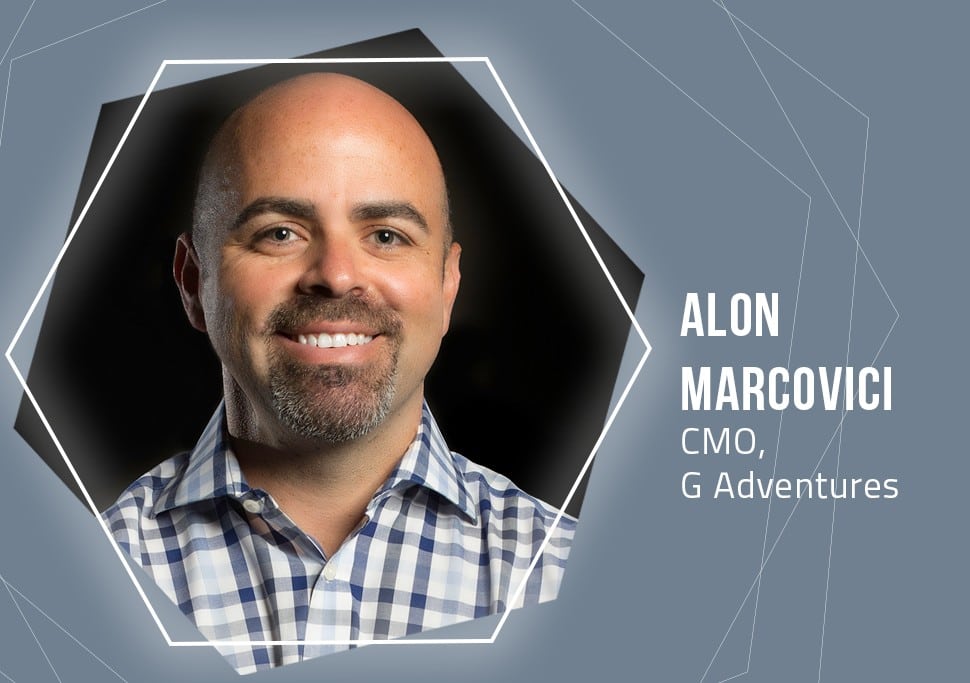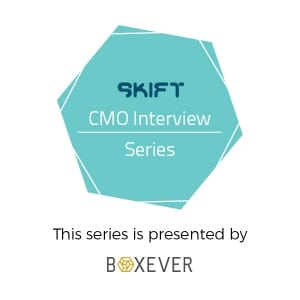
Editor’s Note: Following our previous CEO interview series in online travel, hospitality, and destinations, Skift has launched a new series, this time focused on Chief Marketing Officers.
To better understand the big marketing challenges facing travel brands in an age when consumers are in control, Skift’s What Keeps CMOs Up at Night will talk with the leading voices in global marketing from across all the industry’s sectors.
These interviews with leaders of hotels, airlines, tourism boards, digital players, agents, tour operators and more will explore both shared and unique challenges they are facing, where they get insights, and how they best leverage digital insights to make smarter decisions.
This is the latest interview in the series.
Being identified with one particular type of experience or traveler is a difficult challenge for some travel brands. For others, it’s an opportunity to defy expectations and surprise potential customers with a variety of different experiences.
Canada-based tour operator G Adventures has found success with its small-group adventure tours and is known for its precocious founder Bruce Poon Tip, a notable public speaker and best-selling author.
While the brand is known for its youthful exuberance and focus on a young, active clientele, G Adventures’ vice president of global marketing Alon Marcovici tells Skift that the typical G Adventures traveler is actually older than you may expect.
Marcovici spoke to Skift about staying competitive in a crowded tour operator market, the importance of trade marketing reinforcing consumer marketing and the marketing challenges that keep him up at night.
Skift: What marketing challenges keep you up at night?
Marcovici: What I worry about is keeping up with our pace of innovation. We have a good track record with ambition before, but I worry about how can we continue that, for sure. Then I also worry about things like Zika, and terrorism, and natural disasters. I can’t really control any of those, so from a marketing perspective it doesn’t really impact me on a day-to-day basis, but when you ask the questions of how do we go about dealing with those worries, I guess, some of it is through data.
I’m always cautious of balancing our marketing data with my gut. I don’t want to be riddled with analysis paralysis. I’m absolutely a huge lover of travel, and I absolutely am a big believer in marketing and the value of marketing and the value of measuring what you manage, but I thank my lucky stars quite regularly that I work for a man that believes in telling our story. [G Adventures founder] Bruce Poon Tip wrote two books, and he does that because he believes in the story of our brand. I don’t need to show him the dollars and cents of ROI on every initiative.
That’s very freeing for me as a marketer. But, of course, in the back of my mind I know that I need to know whether something is successful or not in order to know how to do it better the next time.
Skift: Is it a challenge to market your experience when G Adventures offers so many different products in so many diverse destinations?
Marcovici: We’re fortunate in that we have a lot of different things that we can market against. Of course there are the trips themselves, and travel to the places we go, 100 different countries, seven different continents in it of itself sexy so that opens up a lot of doors and opportunities. We’ve got a very unique culture in our place, so in that regard, whether it be our culture, our trips, destinations themselves, our social enterprise model, our leadership culture and our innovation, those are all a variety of topics that we use. Ultimately, from a marketing perspective, our message is to travel with purpose and the fact that you can do good just by traveling. We are trying to infuse that in most of our marketing when we’re not just being quirky and charismatic and a bit off the beaten path in the way we speak.
Skift: G Adventures is known in the industry for appealing to younger travelers. Is this a marketing challenge or opportunity for you?
Marcovici: People have a conception of us as a belief that we are a very young company. But our average traveler is age 37 years old. It’s not 27, so we also offer trips that are far beyond the 20 year old’s economic might in terms of going to Antarctica or the Arctic. Some of our trips on the expedition are some of our most expensive trips, still affordable at a certain tier. They more typically attract a 55-year-old than they might a 25-year-old. Those pose some challenges in terms of reaching mass-market in a global environment with tourism being something that all of the first-world countries participate in.
That itself is one of our challenges, but the other thing is that we just have standard cutting through the clutter issues. This is a cluttered environment within a much larger tourism space, and we’ve got to cut through that clutter. For us, branding is a big way that we do that. We’re a little different.
Skift: One interesting wrinkle for most tour operators is the contracts between consumer and trade marketing. Do you view both areas separately when planning new campaigns, or do you approach them holistically?
Marcovici: Forgive me if this sounds like I’m riding the fence here on this one, but I think we do a little bit of both. Yes, we absolutely do think of it in a bifurcated way in that our B2B agent marketing is very different then our direct marketing, but at the same time, we know that the left hand and the right hand, they feed one another.
We know that there is a relationship between even the most simplest old school traditional marketing out of home. If you put a billboard up somewhere, it’s not just the consumer that sees it, the travel agent may see it too. We know there’s a relationship there. But the individual customer will never know anything about UMI and Gnormous [agent incentive programs]. That’s a pure trade B2B play.
The beneficiary of that will be the customer because of the enhanced discounting, et cetera, and the information and intelligence that’s known about the brand by agents. We definitely have our strengths in both agent and direct. We’re not as great from a digital [sales] perspective.
Skift: On the same note, is it a challenge simply explaining the value proposition of your tours to potential consumers? Small-group adventure travel isn’t necessarily something travelers have already experienced.
Marcovici: We don’t just need to raise awareness about G Adventures; we’re raising awareness around what adventure travel is. Because it’s not intimidating, it’s not adrenaline-fueled adventure, necessarily. I don’t think it’s endorphin-driving bungee jumping all the time. We also have to promote small group adventure travel.
I think that notion of experiential travel with others in a world that is more, and on a macro-level, that is more and more isolated despite all the technology that we have. This is kind of the way to avoid the technology isolation and actually have real meaningful connections among people.
Skift: You said earlier that G Adventures faces some issues on social media. How do you assess the organization’s efforts in the online space, and how they compare to more traditional advertising campaigns?
Marcovici: I’m a big fan of our social media outreach and how we’re about 1.1 million people on social, on Facebook. We’re growing on Twitter. Our Instagram is now getting quite a good engagement. I guess I’d also say more recently we did a wonderful brand campaign in Australia. We’d never bought mass media in Australia, or pretty much anywhere, and we did this year in Australia this fall, and we’ve seen a 100 percent lift in our direct business in Australia. We are out pacing where we were last year in our agents. In all ways and shapes and forms we had our best month this past month, and a big part of that was related to the campaign in Australia.
This series is presented by Boxever. The Skift content team maintains complete editorial control over these interviews and the selection of subjects.
For more insights from Boxever, please see the following reports:

